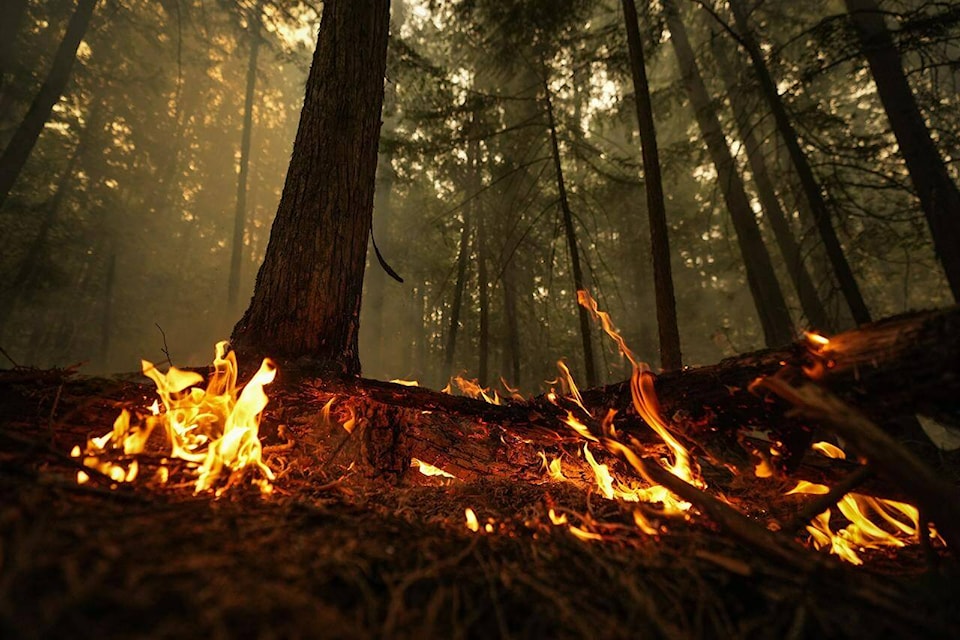Canada should be on šĶÐßēÝŅÐūŋËųhigh alertšĶÐßēÝŅÐūŋËų for 2024 wildfires, a scientist with the Canadian Forest Service said Friday, as he offered a sweeping view of last yearšĶÐßēÝŅÐūŋËųs record-shattering season.
Research scientist Piyush Jain stopped short of giving a prediction for the upcoming season during FridayšĶÐßēÝŅÐūŋËųs briefing. But he presented a number of charts showing certain indicators, such as drought conditions and soil moisture, look similar to around this time last year.
He also pointed to temperature forecasts that predict a hotter than normal start to the wildfire season.
šĶÐßēÝŅÐūŋËųI do not have a crystal ball,šĶÐßēÝŅÐūŋËų he said. šĶÐßēÝŅÐūŋËųBut, yeah, I guess most people will be able to piece together that we should be on high alert for 2024.šĶÐßēÝŅÐūŋËų
Jain spent FridayšĶÐßēÝŅÐūŋËųs briefing going through a far-reaching and data-centric retrospective of the 2023 wildfire season. More people were evacuated and more area was burned last year than during any other Canadian wildfire season on record.
Widespread drought conditions, early snowmelt and lower than usual precipitation were some of the drivers of last yearšĶÐßēÝŅÐūŋËųs record-breaking season, he said.
Jain also pointed to research showing how climate change, fuelled by the release of greenhouse gases from the burning of fossil fuels, is also contributing to longer and more intense wildfire seasons.
He cited a study put together by a team of scientists, including some of his forest service colleagues, that zeroed in on northern QuebecšĶÐßēÝŅÐūŋËųs wildfire season. That study found human-caused climate change made it seven times more likely to see a season with the same fire severity as 2023, and doubled the likelihood of extreme fire weather conditions.
The wildfires impacted šĶÐßēÝŅÐūŋËųevery single person living in Canada,šĶÐßēÝŅÐūŋËų and was šĶÐßēÝŅÐūŋËųseared into our collective consciousness,šĶÐßēÝŅÐūŋËų he said.
Wildfire smoke choked the skies across Canada, closing schools and shutting down outdoor events. Canadians, per capita, experienced eight days of poor air quality, he said, but just how hazardous that air quality was and how many days it lasted varied drastically from place to place.
He said the Northwest Territories had a šĶÐßēÝŅÐūŋËųstaggeringšĶÐßēÝŅÐūŋËų 44 days with šĶÐßēÝŅÐūŋËųvery poor air quality,šĶÐßēÝŅÐūŋËų while Toronto had 14 and Vancouver had four.
Parts of northern Alberta spent 135 days under air quality alerts, so many that a new colour had to be added to the colour-coded map tracking those alerts, he said.
Jain presented data showing Canadian wildfires in 2023 burned through more than 15 million hectares, an area larger than the entire state of New York and almost three times larger than Nova Scotia.
That total is about three million hectares less than what had been previously, and widely, reported. He said thatšĶÐßēÝŅÐūŋËųs largely because fine-grained analysis strips out some water bodies, such as lakes, that donšĶÐßēÝŅÐūŋËųt get captured by real-time satellite data when the fires are burning.
Quebec led the way with nearly 4.5 million hectares burned, followed by the Northwest Territories, Alberta and British Columbia šĶÐßēÝŅÐūŋËų a record for each province and territory.
About 240,000 people were evacuated due to wildfire. Five of the largest wildfire-induced evacuations since 1980 took place last year, including Yellowknife and West Kelowna.
But Jain said there were fewer total fires than the average year. Twenty of the largest fires in 2023 were responsible for half of the total area burned.
Historically, 75 per cent of fires were lightning-caused resulting in 91 per cent of the total area burned. But in 2023, 59 per cent of the fires were caused by lightning, resulting in 93 per cent of the total area burned.
READ ALSO:
READ ALSO:



